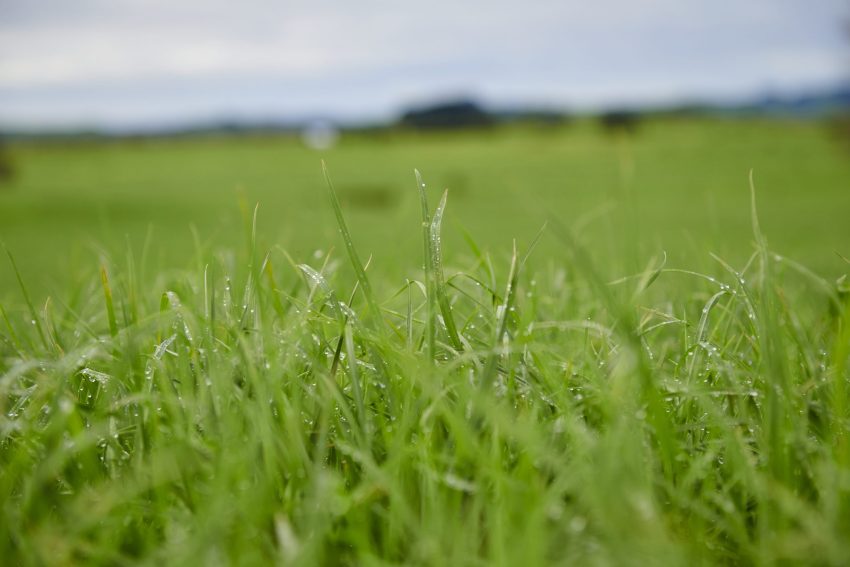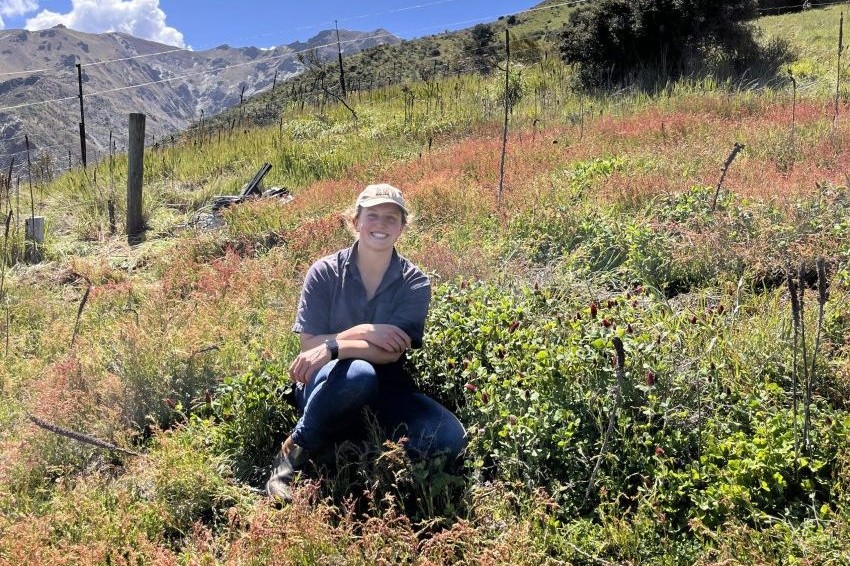Balancing pasture production and resilience
Lincoln University Professor Derrick Moot revisits the basic principles of grazing management as discussed at a special NZ Grasslands Association ‘Resilient Pastures Symposium, held in 2021.

Lincoln University Professor Derrick Moot revisits the basic principles of grazing management as discussed at a special NZ Grasslands Association ‘Resilient Pastures Symposium, held in 2021.
Plants respond in predictable ways to the environment in which they grow. If they are short of carbon they grow leaves, if they are short of nitrogen (N) or water they grow roots. Best management practices must take account of these facts if pastures are to be productive and persistent.
In its simplest form, drymatter (carbon) yield comes from the product of the amount of photosynthetically active solar radiation available (PARo), the fraction of that which is intercepted by the green leaves (PARi) and the efficiency (RUE) with which it is converted to drymatter.
Equation 1:
Yield = PARo x (PARi/PARo) x RUE
In practice PARo is set by day length and light intensity. RUE is consistent among similar species. It is higher for plants that produce mainly sugars, like fodder beet, compared with those that produce more complex products like proteins, such as legumes or oils like canola. Therefore, differences in the yield of a pasture or crop are mainly caused by how much light the canopy of leaves can intercept.
To fully capture all of the available radiation, a pasture canopy needs at least three cubic metres of green leaf per square metre of ground area. On a daily basis, the total amount of assimilate by the canopy is then allocated to leaves, stems and roots. Grazing management affects both the supply and allocation of assimilates, so it is the major determinant of pasture production and persistence.

Recovery of plants after grazing
For plants like perennial ryegrass, best grazing management practice is based on the recovery of plants after grazing. When the canopy of green leaves is defoliated then the plant is short of carbon, the priority is to restore the green leaf area to capture more carbon. This is done through the remobilisation of water-soluble carbohydrates (sugars) from roots and leaf sheaths to regrow green leaves. To capture all of the radiation available and restore the reserves to the roots and shoots each tiller needs time to produce three green leaves.
If defoliation occurs before the reserves have been fully restored, then the plant will once again deplete root and sheath reserves to re-establish the canopy of green leaves. Continuous early defoliation of the canopy leads to a shallower root system. These plants are therefore exploring less and less of the soil so have reduced access to water and N.
The consequences of early defoliation are compounded during periods of water and/ or nitrogen limitation.
For example, when a period of dry weather occurs on a dairy farm the plant immediately reduces its leaf area and allocates a greater proportion of available assimilates to root growth. This reduced leaf area results in lower pasture growth rates and thus less feed is available to meet animal demand.

N fertiliser and the provision of supplementary feed can slow the grazing rotation. The aim of using them is to increase post-grazing residual cover and ensure the ryegrass plants have fully recovered three green leaves before defoliation (Figure 1). In practice though, grazing rotations are often shortened and plants are grazed early at the 2-2.5 leaf stage.
The impact of continuous early grazing is most detrimental to perennial ryegrass, which has lower levels of carbon reserves than tall fescue. Cocksfoot is the most resilient of the commonly sown grass species, but the most adapted species to intensive defoliation is browntop.
The ability of browntop to initiate minimal leaf, but produce a carpet of storage rhizomes and stolons, is advantageous for its survival, however, not for providing feed to grow animals. Browntop is highly competitive at accessing phosphorus (P) from the soil. Plants that are short of P also become carbon-limited because P is used as an energy source in photosynthesis. Therefore, a direct consequence of lower levels of soil P and overstocked or set-stocked pastures, is the dominance of browntop.
The strategic use of N to increase pasture cover before time of deficit is advocated to overcome the fact that plants are N-deficient most of the time. Many grasses, including perennial ryegrass, adjust their leaf area to try to maintain an N content in the leaves of about 3%. This is why N-deficient pasture is frequently short with small leaves.
In high-fertility environments like dairy farms, the addition of N is estimated to produce 10kg drymatter (DM)/kg N applied, which comes from a quicker recovery from grazing and higher photosynthetic rates at higher leaf N concentrations. In lower-fertility environments the N deficiency can be much greater leading to responses of 20-40kg DM/kg N applied. The greater response is because the leaf area of the plants increases to a greater extent to overcome the deficiency, which allows more light interception.

The alternative to applying N to pastures is to encourage an appropriate legume for N fixation. The N is then mainly transferred to the grass through the grazing animal. For dairy pastures this has traditionally been and is returning to encouraging white clover. Recent work from Lincoln has shown a perennial ryegrass/white clover mix was as productive with and without 200kg N/ha applied.
For hill country sheep and beef pastures, the limited land for cultivation reduces the opportunity for pasture renewal. However, the impact of legumes to provide N-rich herbage can be measured compared with resident pasture. In a summer-safe environment one study showed clover-dominant pastures produced more than three times the feed of resident browntop. Similarly, in a summer-dry environment lucerne has produced two to three times the feed of the resident pasture on hill country on Banks Peninsula during low and high rainfall years (Figure 2).
The management of root reserves is key to maintaining a productive stand of lucerne. A study showed grazing lucerne on a fixed 28-day rotation depleted root reserves to almost zero with two tonnes/ha of structural root biomass (Figure 3). In contrast, under an 84-day grazing regime the root biomass increased by 8-10t DM/ha but it was largely unpalatable. The 42-day regime provided a balance between shoot and root reserves and plant and animal requirements.
Rotational grazing best practice
Rotational grazing of tap-rooted species like lucerne and red clover is considered best practice. It allows recovery of the canopy to maximise light interception, recovery of root reserves and the high grazing allowance of high-quality feed to maximise animal production.
The rules may not be followed as strictly when grazing grasses, but the cyclical nature of depletion and recovery of reserves needs to ensure overgrazing does not result in reduced pasture persistence and dominance of low-quality species such as browntop.
The impact of climate change may require us to become even more aware of these principles. Ryegrass is still going to need three green leaves to recover its carbohydrate reserves and lucerne will still produce more feed in spring. N is still going to be an important tool for recovery from adverse conditions.
However, the expected increases in summer-dry periods and warmer winter and night temperatures, coupled with increased legislation around the use of N fertiliser and greenhouse gas emissions, will drive practice change in grazing management of existing pastures, with less set stocking and greater use of other grass species such as cocksfoot and tall fescue.
For hill country, the future can be seen in the development of satellite farming, where small areas of high-quality feed like legumes and herbs are well managed to maximise animal and plant performance. Other areas will be retired to trees to capture carbon.
Management practices
For NZ summer-moist regions, the implications for pasture management are clear:
- Minimise set stocking to avoid browntop
- Fertilise with P and S to ensure higher quality species can compete
- Adjust rotation lengths to allow sown species to recover root reserves
- Graze ryegrass at the appropriate three green leaf stage
- Use N to increase pasture if deficits are developing
- Utilise supplements early in periods of water or N stress.
For summer-dry regions similar strategies are required, but the emphasis had to be on managing the spring when moisture is usually available:
- Minimise set stocking – increased LAI (Leaf Area Index) also increases water use efficiency
- Use N in late winter to increase cover for lambing
- Maintain flexible stock policies so you can trade in periods of deficit
- Identify high-yielding paddocks and use them for improved species
- Identify your legume and manage it.




